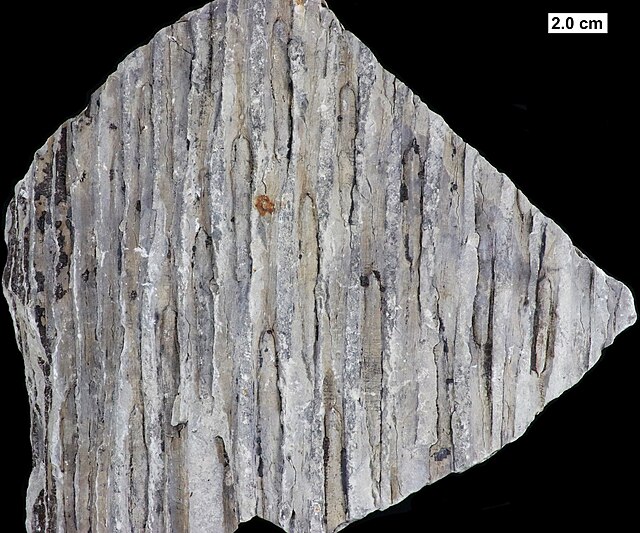The lycophytes, when broadly circumscribed, are a group of vascular plants that include the clubmosses. They are sometimes placed in a division Lycopodiophyta or Lycophyta or in a subdivision Lycopodiophytina. They are one of the oldest lineages of extant (living) vascular plants; the group contains extinct plants that have been dated from the Silurian. Lycophytes were some of the dominating plant species of the Carboniferous period, and included the tree-like Lepidodendrales, some of which grew over 40 metres (130 ft) in height, although extant lycophytes are relatively small plants.
Lycopodites, an early lycopod-like fossil
External mold of Lepidodendron from the Upper Carboniferous of Ohio.
Lycopod bark showing leaf scars, from the Middle Devonian of Wisconsin.
Fossil in situ lycopsid, probably Sigillaria, with attached stigmarian roots.
Vascular plants, also called tracheophytes or collectively tracheophyta, form a large group of land plants that have lignified tissues for conducting water and minerals throughout the plant. They also have a specialized non-lignified tissue to conduct products of photosynthesis. Vascular plants include the clubmosses, horsetails, ferns, gymnosperms, and angiosperms. Scientific names for the group include Tracheophyta, Tracheobionta and Equisetopsida sensu lato. Some early land plants had less developed vascular tissue; the term eutracheophyte has been used for all other vascular plants, including all living ones.
Image: Athyrium filix femina RF
Image: Young lemon basil plant (Ocimum × africanum)
Xylem elements in the shoot of a fig tree (Ficus alba), crushed in hydrochloric acid







